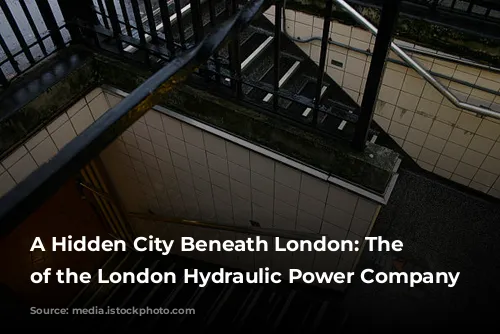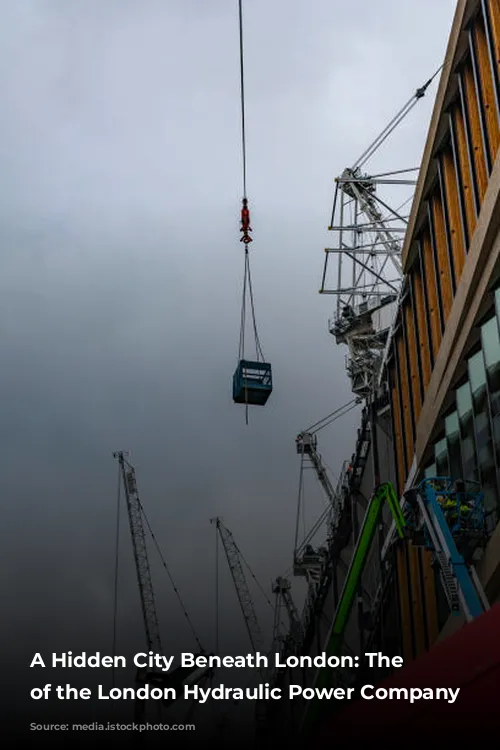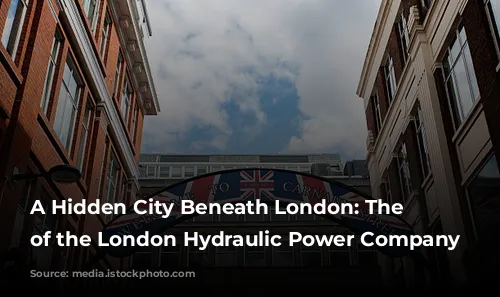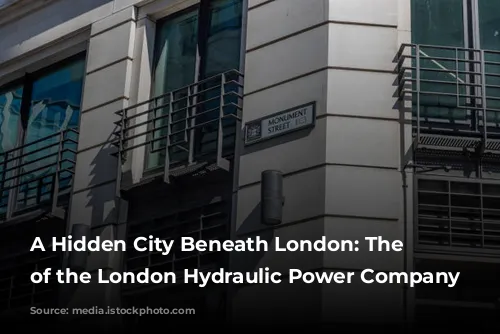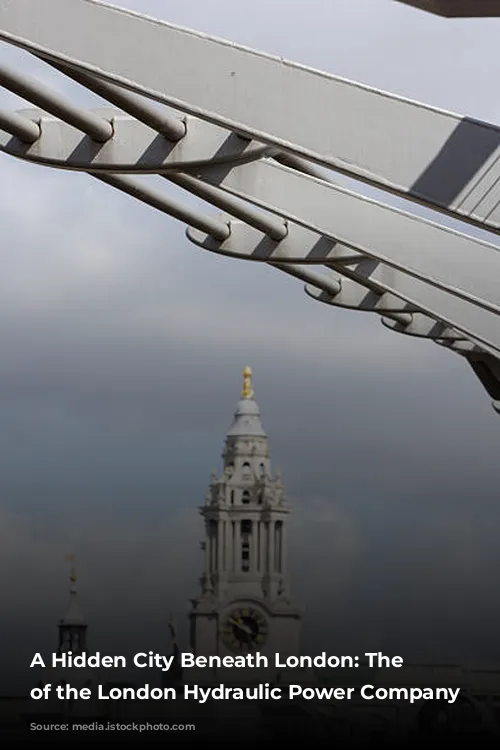Imagine a network of pipes, hidden deep beneath the bustling streets of London, carrying a hidden force that powered the city for almost a century. This is the story of the London Hydraulic Power Company, a marvel of Victorian engineering that brought power to the city before the advent of electricity.
A City Powered by Water
The London Hydraulic Power Company was founded in 1883 with the ambitious goal of building a network of high-pressure water mains throughout the city. Driven by an Act of Parliament, the company merged existing hydraulic companies to create a unified system. This network, spanning most of central London north of the Thames, would soon become a lifeline for the city’s industries, businesses, and even its entertainment.
A Cleaner, More Powerful Alternative
The hydraulic system was a revolutionary solution for the time, offering a cleaner and more compact alternative to the noisy and polluting steam engines. It powered various applications, from workshop machinery and cranes to the intricate mechanisms of theatres and even the iconic Tower Bridge. From the revolving stage at the London Palladium to the cinema organ at Leicester Square, the hydraulic network brought a touch of magic to the city’s entertainment venues. It even supplied fire hydrants, ensuring the safety of buildings with a readily available source of water.
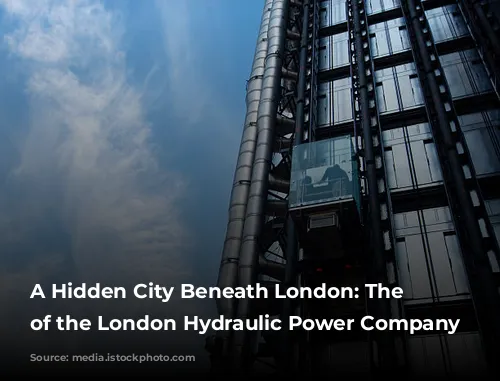
The Power of Pressure
The hydraulic network relied on a constant supply of high-pressure water, maintained by five powerful pumping stations located strategically throughout the city. The water, pumped straight from the River Thames, was heated in winter to prevent freezing. The power of these pumping stations was truly impressive, pushing water at a nominal 800 pounds per square inch (5.5 MPa).
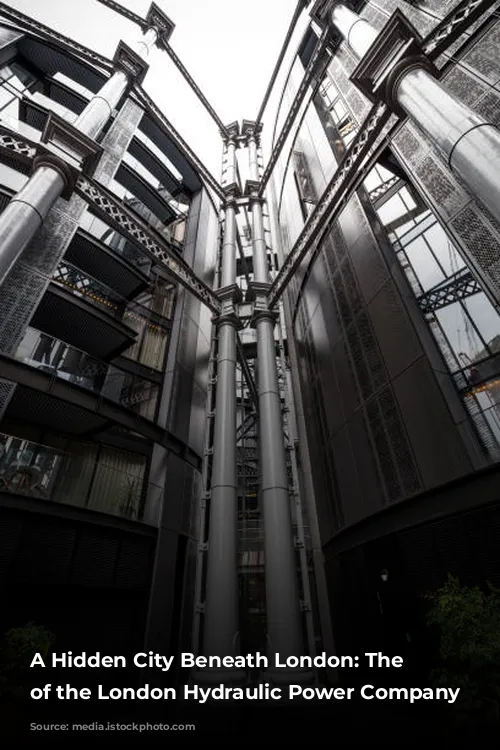
Short-Term Storage: The Power of Gravity
To ensure a consistent supply of water under pressure, the system relied on hydraulic accumulators. These massive vertical pistons were loaded with heavy weights, acting as reservoirs of potential energy. When the system needed a surge of power, the weights would be released, pushing water through the network with incredible force.
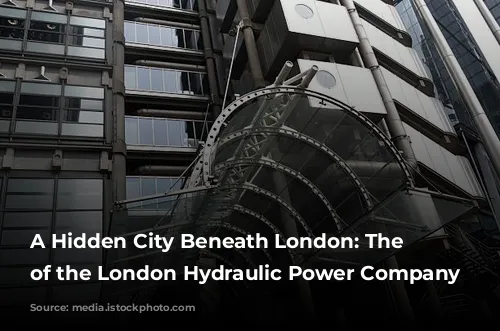
A City Under Construction
The hydraulic mains traversed the River Thames, crossing over iconic bridges like Vauxhall Bridge and Waterloo Bridge and even venturing through the Rotherhithe Tunnel and the Tower Subway. This extensive network, constantly growing and expanding, was a testament to the ambition and ingenuity of the engineers who built it.
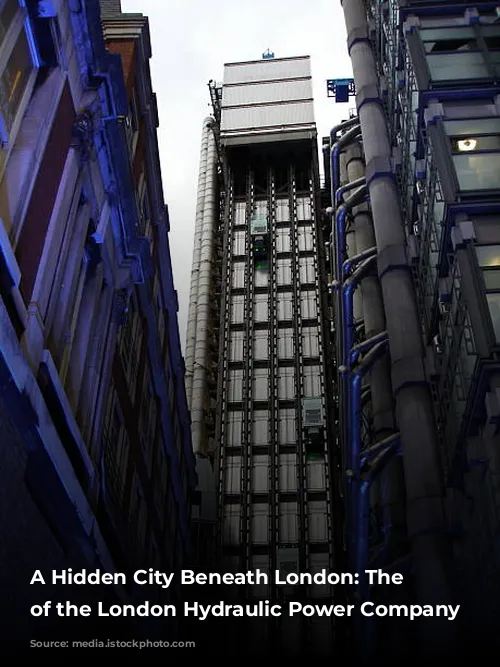
The Rise and Fall of a Hydraulic Empire
The London Hydraulic Power Company reached its peak in 1933, pumping a staggering 32 million gallons of water each week. However, the rise of electricity posed a formidable challenge to the hydraulic system. By 1923, the company began to replace its steam engines with electric motors, but it was already a losing battle.

A Legacy of Innovation
The London Hydraulic Power Company, once a vital force in the city, finally closed its doors in June 1977, leaving behind a legacy of innovation and a network of pipes that continued to serve the city in a new way. The company’s right to access the public highways for their pipes proved valuable to Mercury Communications, who purchased the company and repurposed the network for telecommunications. The Wapping Hydraulic Pumping Station, the last of the five to close, found a new life as an arts center and restaurant.
The story of the London Hydraulic Power Company is a reminder that even the most advanced technology can be surpassed by newer innovations. However, the ingenuity and vision of the engineers who built this remarkable system continue to inspire us to this day.
